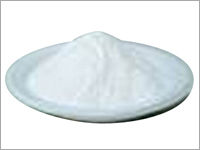Fursultiamine
Product Details:
X
Product Description
Name: FursultiamineSynonyms:N-(4-Amino-2-methylpyrimidin-5-ylmethyl)-N-[4-hydroxy-1-methyl- 2-(tetrahydrofurfuryldithio)but-1-enyl]formamide
Molecular Formula:C17H26N4O3S2
Molecular Weight:398.55
CAS Registry Number:804-30-8
EINECS: 212-357-1
Fursultiamine, a vitamin B1 derivative, enhances chondroprotective effects of glucosamine hydrochloride and chondroitin sulfate in rabbit experimental osteoarthritis
Object and design: The therapeutic effect of glucosamine hydrochloride (GH) and chondroitin sulfate (CS) in combination with fursultiamine, a vitamin B 1 derivative, on the development of cartilage lesions was investigated in an animal model of osteoarthritis (OA). Methods: The OA model was created by partial medial meniscectomy of the right knee joint (day 0). The rabbits were placed into three experimental groups: operated (OA) rabbits that received placebo treatment, OA rabbits that received GH (1000 mg/kg) + CS (800 mg/kg), and OA rabbits that received GH + CS + fursultiamine (100 mg/kg). Each treatment was initiated on day 3 and continued for 8 weeks. Macroscopic and histologic analyses were performed on the cartilage. The level of MMP-1 in OA cartilage chondrocytes was evaluated by immunohistochemistry. Results: Only the group receiving combined treatment with GH + CS + fursultiamine showed a significant reduction in the severity of macroscopic and histologic lesions on tibial plateau, which is the weight bearing cartilage surface of the tibia, compared with placebo-treated OA rabbits. This treatment group also revealed a small, but significant, decrease in the body weight gain of the rabbits. In cartilage from placebo-treated OA rabbits, a significantly higher percentage of chondrocytes in superficial layer stained positive for MMP-1 compared with unoperated control. Rabbits treated with the GH + CS + fursultiamine revealed a significant reduction in the level of MMP-1. Conclusion: These results suggest that the chondroprotective effect of GH + CS is enhanced by the addition of fursultiamine in experimental OA. This effect was associated with a reduction in the level of MMP-1, which are known to play an important role in the pathophysiology of OA lesions
Tell us about your requirement

Price:
Quantity
Select Unit
- 50
- 100
- 200
- 250
- 500
- 1000+
Additional detail
Mobile number
Email
Other Products in 'Vitamins and Nutraceuticals' category
 |
A & Z Group Co.,Ltd
All Rights Reserved.(Terms of Use) Developed and Managed by Infocom Network Private Limited. |
 English
English Spanish
Spanish French
French German
German Italian
Italian Chinese (Simplified)
Chinese (Simplified) Japanese
Japanese Korean
Korean Arabic
Arabic Portuguese
Portuguese







 Send Inquiry
Send Inquiry